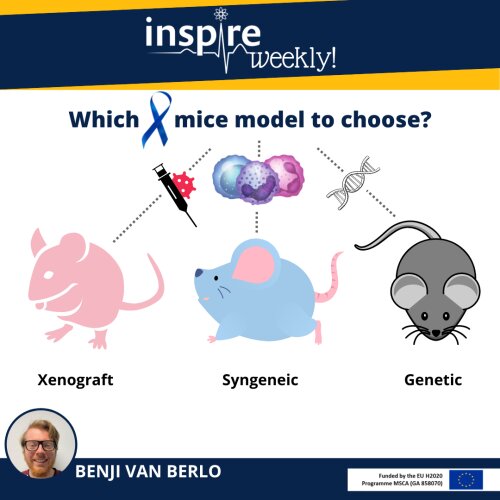20/04/2022 - Benji (ESR #13)

Cancer is one of the leading causes of morbidity and mortality. In 2020, the worldwide incidence of cancer was estimated at 19.3 million and the mortality at 10 million.[1] Thus, many scientific studies focus on understanding cancer biology and pathophysiology, on finding new and better treatments, and on early diagnosis and prevention of cancer. Between 2006 and 2018, annual investments in cancer research increased from 5.6 billion to 8.5 billion by the international cancer research partnership (ICRP), a worldwide network of cancer funding organizations.[2] On average the development of a new treatment, from early development to marketing, costs over 1 billion per medicine over a period of roughly 20 years; this development includes safety as well as efficacy testing.
Testing the functionality and safety of new treatments is performed in several stages starting with in vitro testing e.g. using cancer cell lines for efficacy testing and healthy human cell lines from different organs to assess toxicity. In the next stage, laboratory animals such as mice are used to investigate the efficacy of the drug in vivo. Different cancer mice models can be used to test drug efficacy all having advantages as well as disadvantages. Here, we will describe three frequently used models.
1) The xenograft mice model: These are nude mice without an immune system, which allows for injection of human cancer cells without rejection by the immune system and thus tumor development. The advantage of this model is that it is easy in use and human cancer cells can be used, thus more closely mimicking the human condition. The main disadvantage of this model is the absence of the immune system, which is known to play an important role in cancer and which leads to specific housing requirements of these mice.
2) Syngeneic mice model: In a syngeneic mice model, inbred mice are used. These are mice that are genetically identical to each other as a way to minimize variation in scientific studies caused by difference in genetic background. In rare cases, these mice develop cancer spontaneously or as a result of chemical treatment. When this happens these cancer cells can be isolated and cultured allowing continued growth of these cancer cells ex vivo in a laboratory flask. Because the cells are genetically identical to the host, re-introducing the cells into a host with a similar genetic background is possible, leading to the formation of a tumor. Some of these syngeneic cancer cell lines are already in use for several decades. The main advantage of this model compared to the xenograft model is the presence of an intact immune system. However, since these cells where isolated from mouse tumors, the human condition is less closely mimicked due to potential differences between species.
3) Genetic mice model: Perhaps the best translational mice model to humans, genetic mice models have a specific mutation(s) in their DNA leading to spontaneous development of cancer. Often, the DNA mutations induced in these mice are similar to the human mutation in cancer patients, thereby more closely mimicking the human condition. The main disadvantages of this type of model is that they are more expensive compared to e.g. the syngeneic model and studies using genetic models often take longer due to the high latency time of cancer development.
All three mice models are frequently used in scientific studies to investigate the safety and efficacy of new medicines, but also to unravel the tumor biology or assess cancer enhancing properties of substances or proteins. The same models can also be used to investigate the shared pathophysiology between diseases, for example cardiovascular diseases and cancer. Recent studies using these mice models have demonstrated enhanced cancer growth in the presence of a cardiovascular disease, specifically heart failure.
The focus of my PhD project is to unravel the molecular mechanisms leading to enhance cancer growth in the presence of heart failure specifically focusing on endothelial growth factors.
All in all these mice models provide scientist with powerful tools for cancer research.
References:
- Ferlay, J., et al., Cancer statistics for the year 2020: An overview. International Journal of Cancer, 2021. 149(4): p. 778-789.
- Abudu, R., et al., Trends in International Cancer Research Investment 2006-2018. JCO Global Oncology, 2021. 7: p. 602-610.